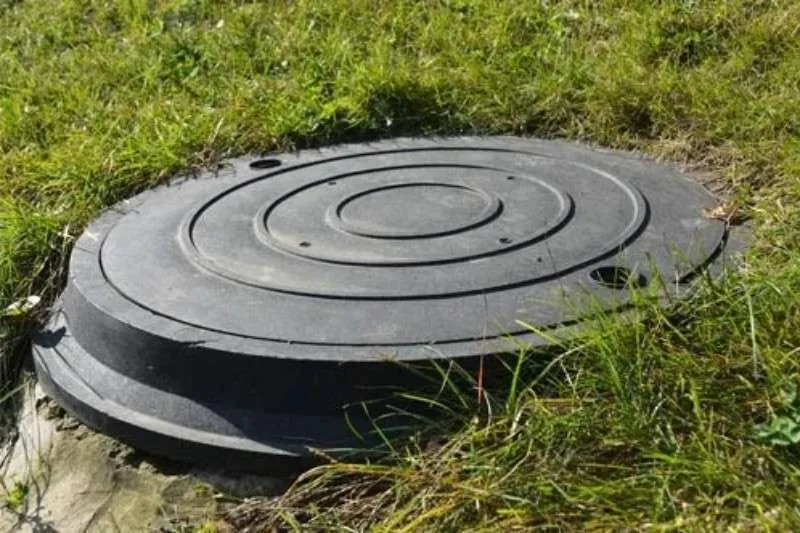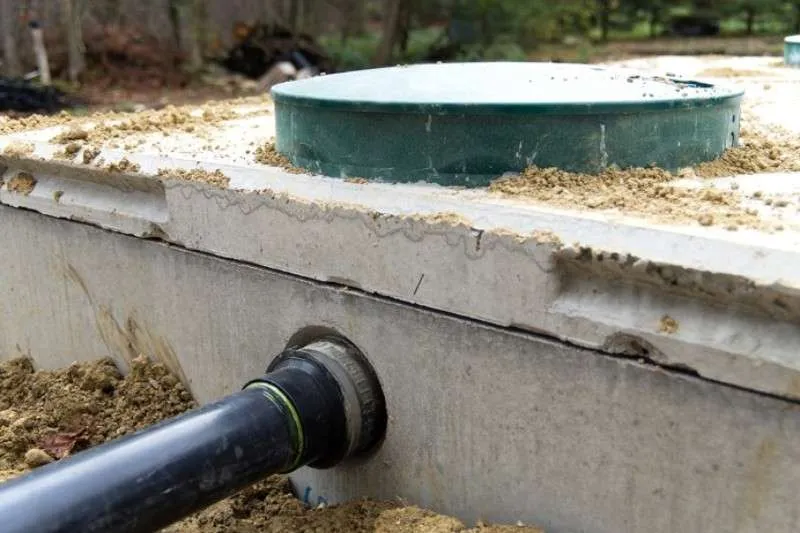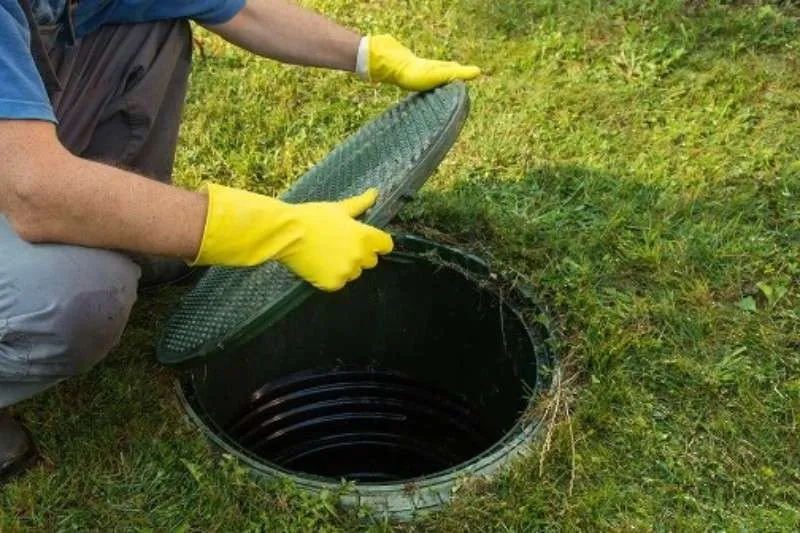Septic tanks are an essential part of life for many homeowners, and there is often a lot of confusion around the role bacteria plays in keeping your system functioning correctly.
Bacteria can be both good and bad when it comes to septic tank performance, so today, we will light some key elements you should know about the bacterial growth process in septic systems.
From the importance of regular maintenance to signs that bacteria levels may have gone off balance, this blog post will provide all the info you need to keep your septic tank healthy.
Introduction to septic tank bacteria
Septic tanks are systems designed to treat wastewater from homes and businesses. The waste from toilets, baths, showers, and sinks enters the tank, where bacteria break it down. This process, known as anaerobic digestion, is essential for the septic system to function properly; however, two types of anaerobic bacteria live in septic tanks: beneficial and harmful.
The Role of Bacteria in Septic Tanks
Bacteria play an essential role in the proper functioning of septic tanks. The bacteria inside break down organic matter, such as fats, proteins, and carbohydrates, into simpler forms that other microorganisms can further break down. This reduces the amount of solid floating in the septic tank enzymes and helps to prevent clogging.
The bacteria also help convert nitrogenous compounds into nitrates, which plants can use as a nutrient source. Finally, bacterial activity helps to reduce harmful odors from wastewater by converting organic matter into carbon dioxide and other gases.
The Difference Between Beneficial and Harmful Bacteria in Septic Tanks
Not all bacteria found in septic tanks are beneficial – some can be harmful. Harmful bacteria can cause clogs, reduce the efficiency of both aerobic and anaerobic bacteria digestion by consuming oxygen, damage the pipes leading out of the tank, and produce hydrogen sulfide, which can corrode metal parts in the system.
Beneficial bacteria, on the other hand, promote the healthy functioning of the tank. They help break down the solid waste, consume nitrogenous compounds and convert them into plant-usable nitrates, reduce wastewater odors, prevent clogs by breaking down fats and oils, and add bacteria and grease. The right balance of beneficial and harmful bacteria is essential for a properly functioning septic tank system.
Fortunately, there are products available on the market that can help keep your septic tank healthy and maintain an ideal bacterial balance – these include additives, such as enzymes or other biological additives, which introduce beneficial bacteria into the system to break down solids, control odors, and reduce the risk of clogs.
Beneficial bacteria in septic tanks

When discussing septic tank bacteria, it is important to distinguish between the beneficial and harmful types. Beneficial bacteria are critical in breaking down waste in a septic tank and maintaining a balanced environment. The primary sources of good bacteria are human and animal waste and soil particles that enter the system from the drainage field.
Good bacteria work to break down waste into harmless compounds that are discharged from the tank through the effluent pipe. These bacteria also help inhibit the growth of harmful pathogens and other microorganisms that can cause system blockages, leading to overflowing septic tanks and potentially hazardous water pollution.
Homeowners with a septic system must know the importance of keeping beneficial bacteria in their tanks. Septic systems cannot properly operate without these helpful microorganisms and require much more frequent maintenance or costly repairs. Homeowners can help keep the right levels of good bacteria in their systems by adding them periodically with a high-quality septic tank additive.
Harmful bacteria in septic tanks
While bacteria are generally beneficial to a septic system, there are some instances in which certain types of bacteria can cause harm. Human waste or other organic material that enters the system can introduce harmful bacteria into a septic tank. Common harmful bacteria found in septic tanks include Enterococci and Fecal Coliform, originating from human feces.
Enterococci is a type of bacteria found in the intestines of warm-blooded animals and can cause urinary tract infections, meningitis, and other serious illnesses if it enters drinking water sources. Fecal Coliform bacteria are also found in the intestines of warm-blooded animals and can cause entry and typhoid fever if ingested.
These harmful bacteria can also lead to septic system failure in extreme cases. It is important to monitor the bacteria levels in a septic tank, as too much of these harmful bacteria can lead to clogging or backing up the drain field, which will require costly repairs. If the septic system is not maintained properly, the bacteria levels can quickly become out of balance.
Regularly pumping and cleaning the septic tank will help keep the harmful bacteria levels in check. It is also important to never dump chemicals or other materials that could alter the pH of a septic tank into it, as this can cause the bacteria levels to become out of balance.
These simple steps ensure your septic system remains properly and free from harmful bacteria. If you have any questions or concerns about the bacteria levels in your septic tank, consult a professional for further advice.
Maintaining a healthy bacterial balance in your septic tank
Understanding your septic tank’s good and bad bacteria is essential to maintaining a healthy, fully functioning system. There are several ways to support beneficial bacteria while avoiding chemical or cleaning products that can harm them.
Good bacteria perform various tasks, including digesting organic material like food waste, dead skin cells, and other debris accumulating in your septic tank. This digestion turns the organic waste into usable nutrients that plants and other organisms can use.
In addition to digesting waste, good bacteria help prevent clogs by breaking down large solid waste particles into smaller pieces that are easier for your system to process. Without these helpful bacteria, your septic tank would quickly be overwhelmed with organic material and other debris, leading to a blockage.
Proper waste disposal practices are essential for keeping the right balance of bacteria in your septic tank. Make sure that you dispose of all food waste and other materials that can decompose properly. Additionally, avoid pouring cooking oils or fats down the drain, as these materials can damage your septic system.
On the other hand, harmful bacteria can cause a lot of damage to your septic tank and its function. These bacteria produce unpleasant odors and toxic gases that can harm your health. Additionally, they can break down sewage sludge more quickly than beneficial bacteria, leading to a buildup of sludge that can cause clogs and blockages.
Septic tank additives and treatments
Septic tank treatments and additives are designed to maintain the proper bacterial balance in septic tanks. Septic tanks rely on bacteria to break down organic material into harmless byproducts that can be safely discharged into the environment. Accumulating organic matter without adequate bacteria can cause clogging, backups, or serious septic system problems.
The most common septic tank treatments and additives contain beneficial bacteria. These beneficial bacteria work to reduce the level of organic material that accumulates in the tank and help digest it more efficiently. In addition, these bacteria also produce enzymes that further break down sludge into liquid form for easy removal from the septic tank pumping well.
When choosing a septic tank treatment or additive, selecting a product containing the right bacteria type is important. Different bacteria perform different functions and can be more effective in certain conditions. Some bacteria are better suited for sludge digestion, while others function better in aerobic environments.
It is also important to choose a septic tank treatment or additive that is safe and effective. Look for products manufactured by standards set by the Environmental Protection Agency (EPA) or other government regulatory bodies. Researching these products can help ensure you choose an effective and safe product.
By using septic tank treatments and additives, you can maintain the proper bacterial balance in your septic tank and prevent clogging, backups, or other serious system problems. Researching your options can help you select the best septic tank treatments and additives.
Signs of bacterial imbalance in your septic system

A healthy septic system contains a balance of beneficial bacteria and microorganisms. But too much or even too much bacteria or little of these organisms can cause serious issues with your septic systems, sometimes resulting in costly repairs. Knowing the signs and symptoms of an unhealthy septic system is essential for maintaining it properly.
Symptoms of an unhealthy septic system include slow drainage, frequent clogs, gurgling sounds from the drains, foul odors from your drains or backyard, and standing water in your yard. Slow drainage can be caused by too many good bacteria blocking wastewater flow, while clogged pipes often indicate that there is not.
Common signs of an unhealthy septic system include a wet and soggy lawn, water backing into the house, and sewage pools in your yard. These are all caused by a lack of beneficial bacteria necessary to properly process wastewater. If you notice any of these signs, it’s important to call a professional immediately before the issue escalates.
FAQs
Why are bacteria important in a septic tank?
Bacteria are essential for breaking down organic material in a septic tank. Without these bacteria, the organic matter will accumulate and block up the pipes, leading to clogs, backups, and other serious system issues.
What is the difference between good and bad bacteria in septic systems?
Good bacteria are beneficial for breaking down organic material in the septic tank. They also produce enzymes that break down sludge into liquid form for easy removal from the septic tank pumped well. Bad bacteria can break down sewage sludge more quickly than beneficial bacteria, leading to a buildup of sludge that can cause clogs and blockages.
How can I promote the growth of beneficial bacteria in my septic tank?
The most effective way to promote the growth of beneficial bacteria in your septic tank is to use a septic tank treatment or additive that contains them. These products are designed to keep aerobic bacteria and help restore the balance of good and bad bacteria in your septic system, allowing it to function properly.
What types of products and chemicals can harm septic tank bacteria?
Chemicals such as bleach, antifreeze, pesticides, and motor oil can contaminate septic tank bacteria. It is important to avoid putting these types of chemicals into your septic system as they can disrupt the balance of good and bad bacteria and cause serious issues with your system.
Are septic tank additives necessary for maintaining bacterial balance?
While septic tank additives can help restore the balance of good and bad bacteria in your septic system relies well on, they are unnecessary for maintaining it. Regularly pumping and maintaining your septic system is the best way to ensure a healthy bacterial balance.
Conclusion
Proper septic tank maintenance is essential for your system’s life span and performance. It’s important to understand how bacteria affect it positively and negatively. Septic systems come in various configurations; you should know your specific needs. Regularly inspect your septic system owner for signs that bacterial populations may have gone off balance, and act accordingly, whether replacing or supplementing bacteria or taking other corrective measures.


